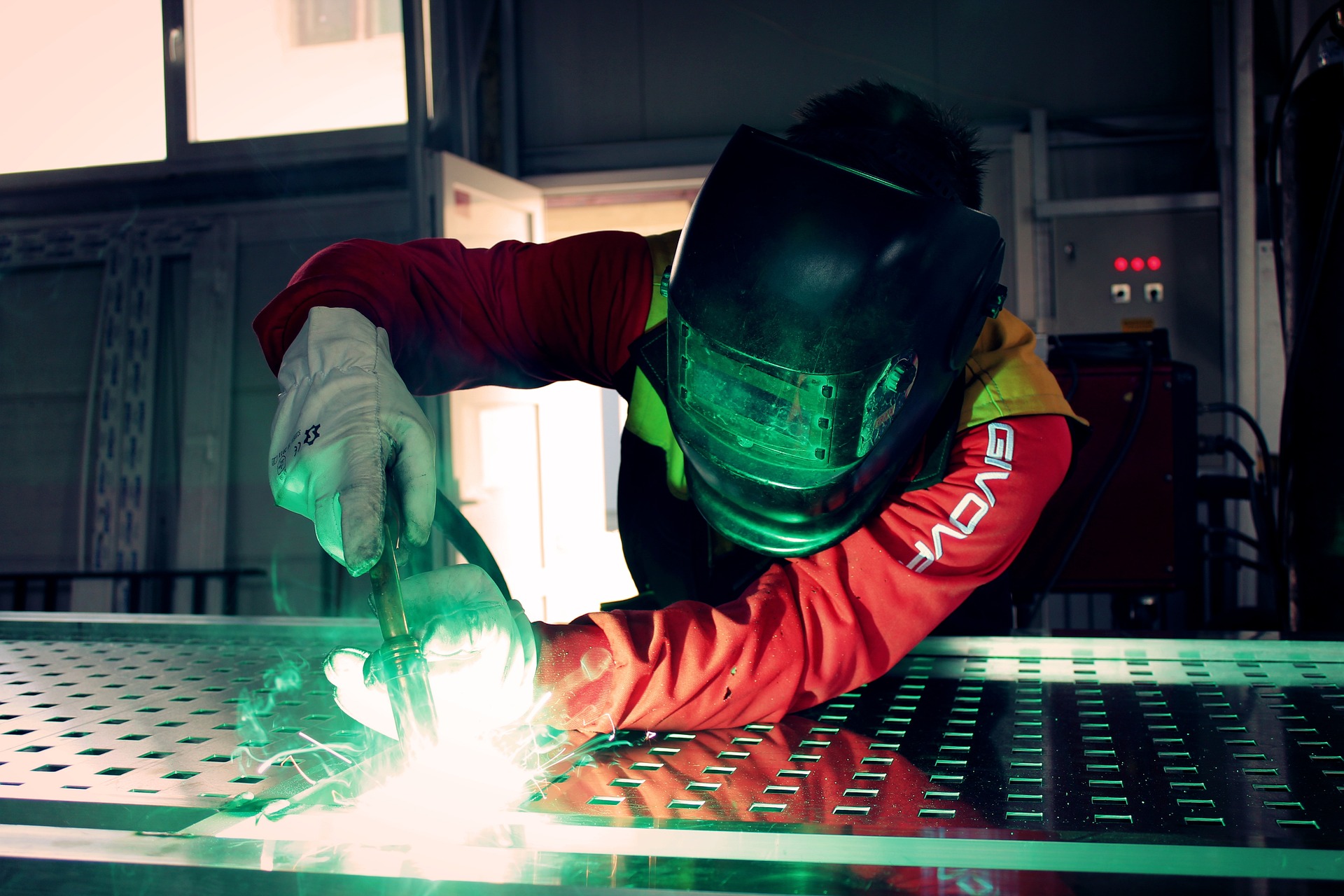Welding Jobs: Essential Safety Gear for Aspiring Welders
Welding is a crucial skill in many industries, from construction to manufacturing. As more individuals consider welding as a career path, it's essential to understand the importance of safety gear in this profession. Proper safety equipment not only protects welders from potential hazards but also ensures compliance with industry standards and regulations. This article will explore the essential safety gear that every aspiring welder should be familiar with, focusing on key items such as helmets, gloves, and steel-toed boots.

In addition to helmets, welders should also wear safety glasses or goggles underneath their helmets for extra protection against flying debris and sparks. Some welders may opt for a face shield in conjunction with their helmet for added protection, especially when performing tasks that generate a significant amount of sparks or debris.
Why are specialized welding gloves essential for hand protection?
Welding gloves are another crucial component of a welder’s safety gear. These gloves are designed to protect the hands and forearms from heat, sparks, and sharp edges commonly encountered in welding environments. Welding gloves are typically made from heat-resistant materials such as leather, kevlar, or flame-resistant synthetic fabrics.
Different types of welding processes may require specific glove designs. For instance, TIG (Tungsten Inert Gas) welding often requires thinner, more flexible gloves to allow for greater dexterity, while stick welding may call for thicker, more insulated gloves to protect against higher heat levels. It’s important for welders to choose gloves that provide the right balance of protection and dexterity for their specific welding tasks.
How do steel-toed boots contribute to welding safety?
Steel-toed boots are an essential part of a welder’s safety gear, protecting the feet from heavy falling objects, sharp metal edges, and hot sparks. These boots typically feature a reinforced toe box made of steel or composite materials that can withstand heavy impacts. The soles of welding boots are often designed to be slip-resistant and heat-resistant, providing stability and protection on various work surfaces.
In addition to steel toes, many welding boots incorporate features such as metatarsal guards to protect the top of the foot, flame-resistant materials, and electrical hazard protection. When selecting steel-toed boots for welding, it’s crucial to choose a pair that fits well, provides adequate support, and meets relevant safety standards for the specific welding environment.
What other protective clothing should welders wear?
Beyond helmets, gloves, and boots, welders should wear appropriate protective clothing to cover their entire body. This typically includes flame-resistant coveralls or jackets and pants made from materials such as treated cotton, leather, or specialized flame-resistant fabrics. These garments help protect the welder’s skin from burns caused by sparks, spatter, and ultraviolet radiation.
Welders should also consider wearing a welding cap or beanie to protect their hair and scalp from sparks and UV radiation. Some welders may opt for flame-resistant arm sleeves or a welding jacket for additional protection, especially when working in environments with higher heat exposure or overhead welding positions.
How important is respiratory protection in welding?
Respiratory protection is a critical but often overlooked aspect of welding safety gear. Welding processes can generate harmful fumes and gases that pose serious health risks when inhaled. Depending on the type of welding and the materials being welded, welders may need to use respirators or powered air-purifying respirators (PAPRs) to protect their lungs from hazardous particles and gases.
For less hazardous welding environments, a simple disposable respirator may be sufficient. However, for more intense welding operations or when working with materials that produce toxic fumes, a more advanced respiratory protection system may be necessary. It’s crucial for welders to assess the specific respiratory hazards in their work environment and choose appropriate protection accordingly.
What are the costs associated with essential welding safety gear?
Investing in quality welding safety gear is crucial for aspiring welders, but it’s important to understand the associated costs. Here’s a breakdown of typical price ranges for essential welding safety equipment:
| Safety Gear Item | Price Range (USD) | Features |
|---|---|---|
| Welding Helmet | $50 - $400 | Auto-darkening lens, adjustable shade settings |
| Welding Gloves | $15 - $50 | Heat-resistant leather, reinforced palm |
| Steel-Toed Boots | $80 - $200 | Steel toe cap, slip-resistant sole |
| Flame-Resistant Jacket | $50 - $150 | FR-rated material, multiple pockets |
| Respirator | $30 - $200 | Disposable to reusable with replaceable filters |
Prices, rates, or cost estimates mentioned in this article are based on the latest available information but may change over time. Independent research is advised before making financial decisions.
While the initial cost of quality safety gear may seem high, it’s important to view it as an investment in personal safety and long-term career success. Many employers provide some or all of the necessary safety equipment, but having personal gear ensures a proper fit and allows for practice outside of work environments.
In conclusion, understanding and investing in proper safety gear is crucial for anyone considering a career in welding. From protecting the eyes with a quality welding helmet to safeguarding the feet with steel-toed boots, each piece of equipment plays a vital role in ensuring a welder’s safety on the job. By prioritizing safety and investing in the right gear, aspiring welders can set themselves up for a successful and secure career in this dynamic field.






